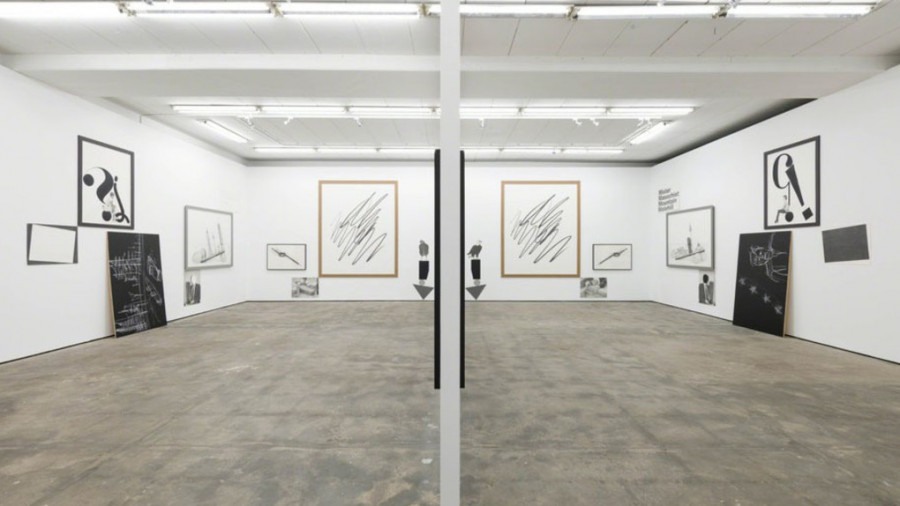
Doppelgänger
www.wsimag.com
18.11.2018
Wentrup Gallery is pleased to present Karl Haendel’s second solo exhibition with the gallery, titled Doppelgänger, opening on November 16, 2018. Since the start of his career Haendel (b.1976) has used drawing to discover connections between seemingly disparate nodes of cultural data, drawing attention to the overlaps between the social, political, and personal. Through formal manipulation and repacking of pre-existing imagery, Haendel explores how our culture uses images to produce opinions, values, and beliefs and how the images we produce reflexively re-shape these frameworks.
However, this exhibition is not really an exhibition, it might be better described as two exhibitions in one, or perhaps, an exhibition with a split personality. Upon entering the gallery you are immediately confronted with a wall interrupting your path, forcing you to choose which way to go–left or right. Wentrup gallery is bisected by a wall, and each half of the space appears just like its other half; the drawings in both spaces are identical in size and medium, framed in the same manner, and hung in the same configuration. You are never able to view a work next to its twin, or indeed the whole exhibition at once because a wall is in your way. But there is a doorway through this wall, and when you emerge on the other side, you are back where you just were. Or are you? Or is it? Things are just slightly off, and upon closer inspection, the drawings are all just a bit different, varying in composition, representation, perspective, tonality or orientation. It’s weird. Slightly strange, but still familiar. Or as Freud would call it, “Das Unheimliche.”
The idea of the ‘Doppelgänger’ emerges from romantic literature at the end of the eighteenth century and refers to an entity that possesses the likeness of another — an (almost) identical look-alike. Doppelgänger imagery was often used to examine the duality of human nature or a lack of a true fundamental identity. Examples in literature include Robert Louis Stevenson’s fictional character from 1886, the friendly Dr. Jekyll, who is possessed by a split personality with an opposite nature, the violent Mr Hyde, or Dostoyevsky’s The Double, whose protagonist encounters an identical look-alike, who possesses all the charm and confidence that he lacks, leading to his own madness and eventual replacement by his stand-in.
Haendel’s doppelgänger drawings include Child King 1, depicting French King Louis XIV as a teenager and dressed elaborately as the God Jupiter, and Child King 2, depicting the son of Louis XV (Louis, Dauphin of France), peacocking similarly in extravagant attire. In these drawings Haendel reminds us that some of today’s world leaders, whose monarchical tendencies, garish taste, and accumulation of wealth through birthright and plunder, have their historical antecedents. Doppelgängers do appear, sometimes side-by-side, sometimes centuries apart, yet they are no less freighting.